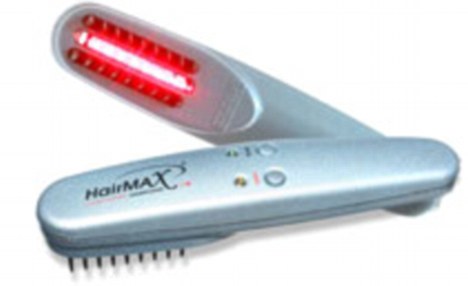- High level of precision
- Minimal invasiveness
Lasers use focused and intense forms of light energy of a single wavelength. This can create very specific changes in small areas of tissue without the need for surgical excisions.
Applications in laser hair restoration can seem promising. But the results do not compare above and beyond standard hair transplant procedures. In fact, they pose new challenges that can actually compromise the quality of the outcomes.
Patients should never accepting information at face value. instead, sound decisions and conclusions can be made by understanding a larger picture of how and why certain methods work (or don’t work).
Two Types of Laser Hair Restoration
(1) Stimulation of the hair follicles
Like many forms of hair loss treatments, lasers are being promoted as a way to stimulate the follicles so that new hair can grow.
Laser energy is used for hair removal purposes. And one of the side effects that have been observed (under lower settings) is the growth of new hair.
This phenomenon was developed into a laser hair restoration procedure. It does not promise to reverse the signs of baldness. Instead it is used to help revitalize follicles that are just starting to miniaturize and lose hair.
Laser Combs
Laser combs have been developed for in home use to stimulate follicles as a way of promoting the growth of new hair

The FDA has approved them as being safe, as opposed to being effective.
(2) Creating incisions for recipient grafts
In a hair transplant procedure, grafts are first harvested from donor regions on the head or body. The surgeon then creates slits in the targeted bald areas (to replicate natural hair growth angles, orientation and other details). The donor grafts are then inserted into these incisions.
Lasers are capable of doing the same thing. The proposed advantage is less bleeding. Heat from the laser can close off the blood vessels.
However, there are two issues that can actually incur negative consequences for the final results
1. Newly placed hair grafts require abundant circulation.
The blood carries oxygen and nutrients that help strengthen the follicles, allowing them to survive and grow hair. Closing off the blood vessels can impede this prime objective.
2. Laser incisions cause damage to the collagen and elastin protein fibers
This is detrimental to the firmness and elasticity of the skin. As a result, there is a much higher chance of the grafts falling out.
Sophisticated Technology Does Not Always Produce The Best Results
Laser hair restoration can seems like an exciting prospect at first. But long term satisfaction is much more likely with well executed transplantation procedures. This patient was finally able to stop using his hair piece after fourteen years because of his UGraft surgeries.

Stimulating follicles will not guarantee results. The concrete reality of having implanted and actively growing hair structures is far more preferable. And using lasers in the recipient area may create conditions where little to no growth is seen.
The patient depicted in the images above was able to receive the coverage he needed with the help of beard hair follicles. To watch his video, click here.
